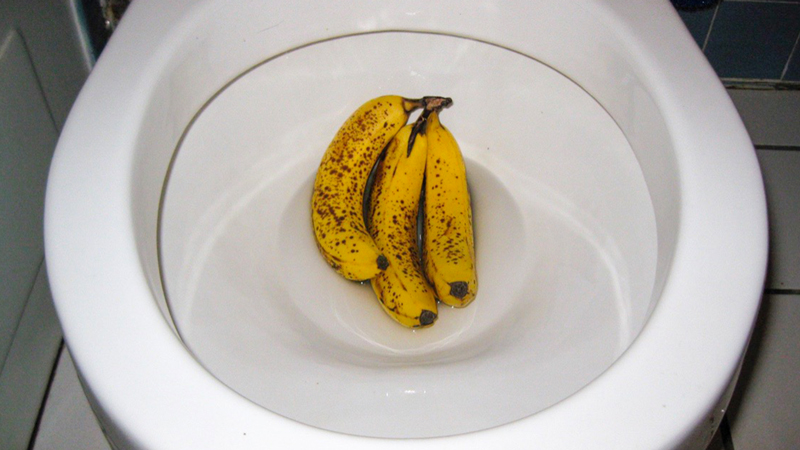Can One to Dispose of Food Waste in the Toilet?
Can One to Dispose of Food Waste in the Toilet?
Blog Article
This post underneath about Flushing Food Down the Toilet? is fairly motivating. Don't overlook it.

Introduction
Many individuals are typically confronted with the dilemma of what to do with food waste, especially when it concerns leftovers or scraps. One usual concern that emerges is whether it's all right to purge food down the commode. In this post, we'll look into the reasons why individuals might consider flushing food, the consequences of doing so, and alternate techniques for correct disposal.
Reasons individuals may consider purging food
Absence of recognition
Some individuals might not recognize the prospective damage brought on by purging food down the bathroom. They may mistakenly believe that it's a harmless practice.
Comfort
Flushing food down the bathroom may feel like a quick and easy solution to taking care of unwanted scraps, particularly when there's no neighboring garbage can readily available.
Laziness
Sometimes, individuals may merely select to flush food out of large negligence, without thinking about the repercussions of their activities.
Consequences of flushing food down the toilet
Ecological effect
Food waste that winds up in waterways can contribute to pollution and damage marine ecosystems. Furthermore, the water utilized to flush food can stress water resources.
Pipes concerns
Purging food can lead to clogged up pipes and drains, causing costly plumbing repairs and hassles.
Types of food that need to not be flushed
Coarse foods
Foods with coarse textures such as celery or corn husks can get tangled in pipes and create obstructions.
Starchy foods
Starchy foods like pasta and rice can take in water and swell, causing clogs in pipes.
Oils and fats
Greasy foods like bacon or cooking oils should never ever be flushed down the bathroom as they can strengthen and create blockages.
Appropriate disposal approaches for food waste
Making use of a waste disposal unit
For homes geared up with garbage disposals, food scraps can be ground up and purged via the plumbing system. Nonetheless, not all foods appropriate for disposal in this manner.
Recycling
Certain food product packaging materials can be recycled, decreasing waste and lessening ecological impact.
Composting
Composting is an environmentally friendly way to throw away food waste. Organic materials can be composted and used to enhance dirt for horticulture.
The significance of correct waste management
Decreasing environmental damage
Correct waste management techniques, such as composting and recycling, help lessen pollution and maintain natural deposits for future generations.
Shielding pipes systems
By avoiding the technique of flushing food down the commode, homeowners can avoid pricey pipes fixings and preserve the integrity of their plumbing systems.
Conclusion
Finally, while it may be alluring to purge food down the toilet for comfort, it's important to understand the prospective consequences of this action. By taking on proper waste monitoring methods and getting rid of food waste properly, people can contribute to healthier pipes systems and a cleaner environment for all.
FLUSH FOOD DOWN THE TOILET?
FLUSHING FOOD CAN CAUSE BLOCKED DRAINS IN YOUR HOME
All of the plumbing fixtures in your home are connected to the same sewer pipe outside of your home. This outdoor sewer pipe is responsible for transporting all the wastewater from your home to the Council sewer mains. Even small pieces of food that go down the kitchen sink can cause problems for your sewer. It should therefore be obvious that flushing larger bits of food, such as meat, risks a clog in either the toilet itself or the sewer pipes. Flushing greasy food is even more problematic because oil coagulates when it cools, coating the interior lining of your pipes.
THE TOILET IS NOT A BIN
Food isn’t the only thing that people shouldn’t be flushing down the toilet. People use the toilet to dispose of all kinds of things such as tampons, makeup wipes, dental floss, kitty litter and even underwear. Water goes to great lengths to educate residents about the high costs and stress placed on wastewater treatment systems simply from people flushing the wrong stuff down the toilet. It costs taxpayers millions of dollars each year, and homeowners thousands in blocked drain repairs.
FLUSHING FOOD IS A WASTE OF WATER
Flushing food is a waste of our most precious resource - water. In June this year Level 1 water restrictions were introduced to protect water supply from drought conditions. Much of New South Wales continues to be affected by prolonged drought with recent figures revealing up to 97 per cent of the state remains in drought. Depending on whether you have a single or dual flush toilet, every single flush uses between five and 11 litres of water. In the current climate this is a huge amount of water to be wasting on flushing food that should be placed in the bin (or better yet, the compost).
https://www.jabplumbingsolutions.com.au/blog/can-you-flush-food-down-the-toilet

As a person who reads on Flushing Food Down the Toilet?, I thought sharing that blog post was a good thing. Enjoyed our blog posting? Please quickly share it. Let others locate it. Thanks for being here. Return soon.
Schedule Service Now Report this page